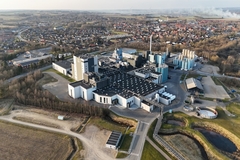
- Industry news
Industry news
- Category news
Category news
- Reports
- Key trends
- Multimedia
- Journal
- Events
- Suppliers
- Home
- Industry news
Industry news
- Category news
Category news
- Reports
- Key trends
- Multimedia
- Events
- Suppliers
dsm-firmenich flags widespread mycotoxin contamination in global feed ingredients

dsm-firmenich’s latest World Mycotoxin Survey flags the widespread presence of harmful mycotoxins, with specific regions facing high-risk exposure.
Mycotoxins are toxic compounds that are naturally produced by certain types of fungi. Molds that can produce mycotoxins grow on several food supplies.
The global supplier collected and analyzed 10,868 samples across 81 countries from January to June 2025, resulting in 53,382 analyses. The most frequently detected mycotoxins were deoxynivalenol (DON), zearalenone (ZEN), and fumonisins (FUM), which are linked to animal health impact and productivity.
When ingested by animals, they have a wide range of adverse effects such as impaired reproduction, digestive disorders, carcinogenicity, and reduced performance.
Regional findings
The Americas and Asia showed the highest levels of contamination.

North America reported a high prevalence of DON and ZEN, with 78% and 83% of samples testing positive, respectively. These toxins pose significant risks to livestock, affecting immune function and reproductive performance.
In Central and South America, fumonisins were dominant, with average contamination levels reaching approximately 2,000 parts per billion.
South Asia remains heavily affected by aflatoxins, found in 85% of samples tested.
In the China/Taiwan region, 98% of samples contained fumonisins. Meanwhile, East Asia recorded a 100% occurrence rate for the same mycotoxin.
Europe also faces challenges. DON was found in 85% of samples from Central Europe, while Southern Europe showed high levels of aflatoxins (54%) and fumonisins (76%).
Ursula Hofstetter, head of mycotoxin risk management at dsm-firmenich, says: “This year’s results once again highlight the widespread and persistent nature of mycotoxin contamination in feed ingredients across the globe.”
“With risks continuing to pose a threat to animal welfare, productivity, and sustainability, proactive risk management and regular monitoring are more important than ever to maintain the profitability of both the feed industry and animal protein production sectors.”
The survey results are based on routine screenings of raw materials and finished feed, which is essential to understanding contamination trends and subsequent mitigation strategies.
Anneliese Mueller, technical expert, Mycotoxins at dsm-firmenich Animal Nutrition and Health, previously told Food Ingredients First that monitoring finished feed and raw ingredients used in animal feed is critical to preventing negative impacts on animal health and performance, which directly affect profitability.










